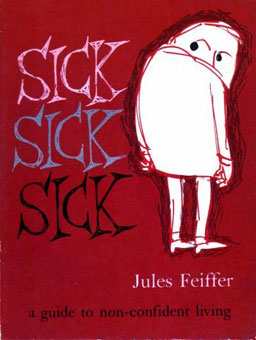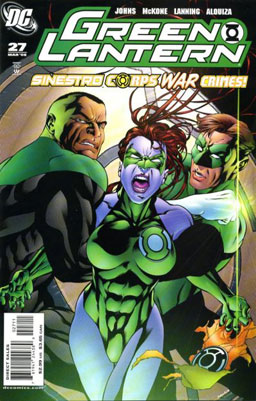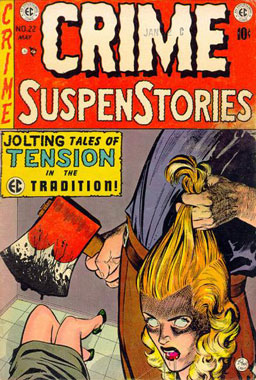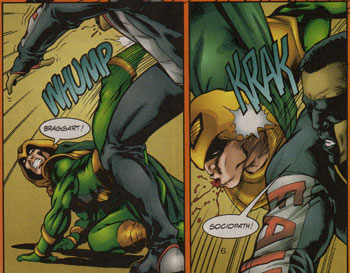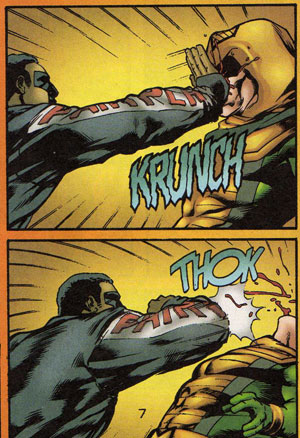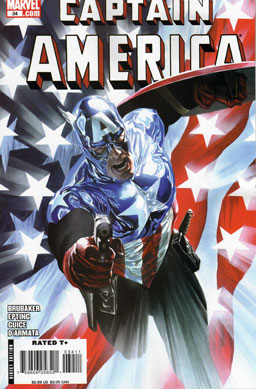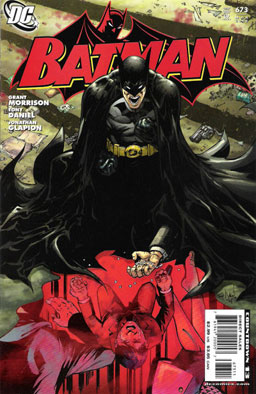
Batman #673
This is a pretty weird issue, with lots of off-kilter stuff going on, some of it contradicting itself or current continuity. The explanation is that Batman has had a heart attack and is hallucinating almost everything that happens here. He imagines himself undergoing a ritual in a cave in Nanda Parbat, reliving the deaths of his parents, threatening a crime boss, watching his own funeral, meeting up with a creepy monster version of Bat-Mite, and undergoing an extended period in an isolation chamber. In the end, his life is saved… but his rescuer is a guy wearing a Batman costume and armed with a power drill. What the heck is going on?
This issue is getting a lot of attention right now because of one single panel:
 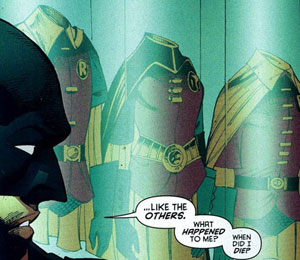
Explanation: Ever since Jason Todd died, Bats has kept a memorial case in the Batcave that includes Jason’s Robin uniform. A couple of years ago, when the current Robin, Tim Drake, was taking a short hiatus from crimefighting, Batman recruited Stephanie Brown, a friend of Tim’s who operated as a superhero named the Spoiler, as a new replacement Robin. She was abducted, tortured with a power drill, and killed pretty darn horribly by a villain named Black Mask after only a short time as Robin.
Anyway, folks started noticing that Batman hadn’t set up a memorial case for Stephanie. Arguing (correctly, in my opinion) that it would be out-of-character for Batman not to give Stephanie a memorial case, and that her death was part of a long-running and way creepy hostility to female characters in the comics industry, they set up a webpage to advocate for a memorial case for Steph.
DC Comics reacted to this fairly predictably — by screaming, “A memorial case?! B-But she’s a girl!” And that really jump-started a new movement of feminist comics fans who point out that, yeah, girls read comics, and they’ve got plenty of reasons to be unhappy with the way women are portrayed in an awful lot of comics.
That’s simplifying things a lot for brevity’s sake. But the point is that, in this latest issue of “Batman,” writer Grant Morrison just gave Stephanie Brown her memorial case. Sure, it may very well be part of Batman’s hallucinations. But when a writer as important to comics as Morrison says it’s there, and when he’s setting Batman up to be tortured by the same sort of power drill that was used to kill Stephanie, that means it’s not just fans who are agitating for better treatment for Stephanie and other female characters — it means creators are realizing that it’s time to change things up, and that the editors may be realizing that they don’t gain anything by angering their readers, male or female. That alone is a welcome change.
Verdict: Thumbs up. The story’s good, the art is good. Part of me figures that, after a heart attack, getting his back broke, getting shot or stabbed every other issue, Batman should just move into a convalescent home and have a nice long rest. The memorial case issue is, admittedly, a minor part of the story, but it gives the entire comic a feeling that important stuff is going on here. I’m looking forward to the next issue.

